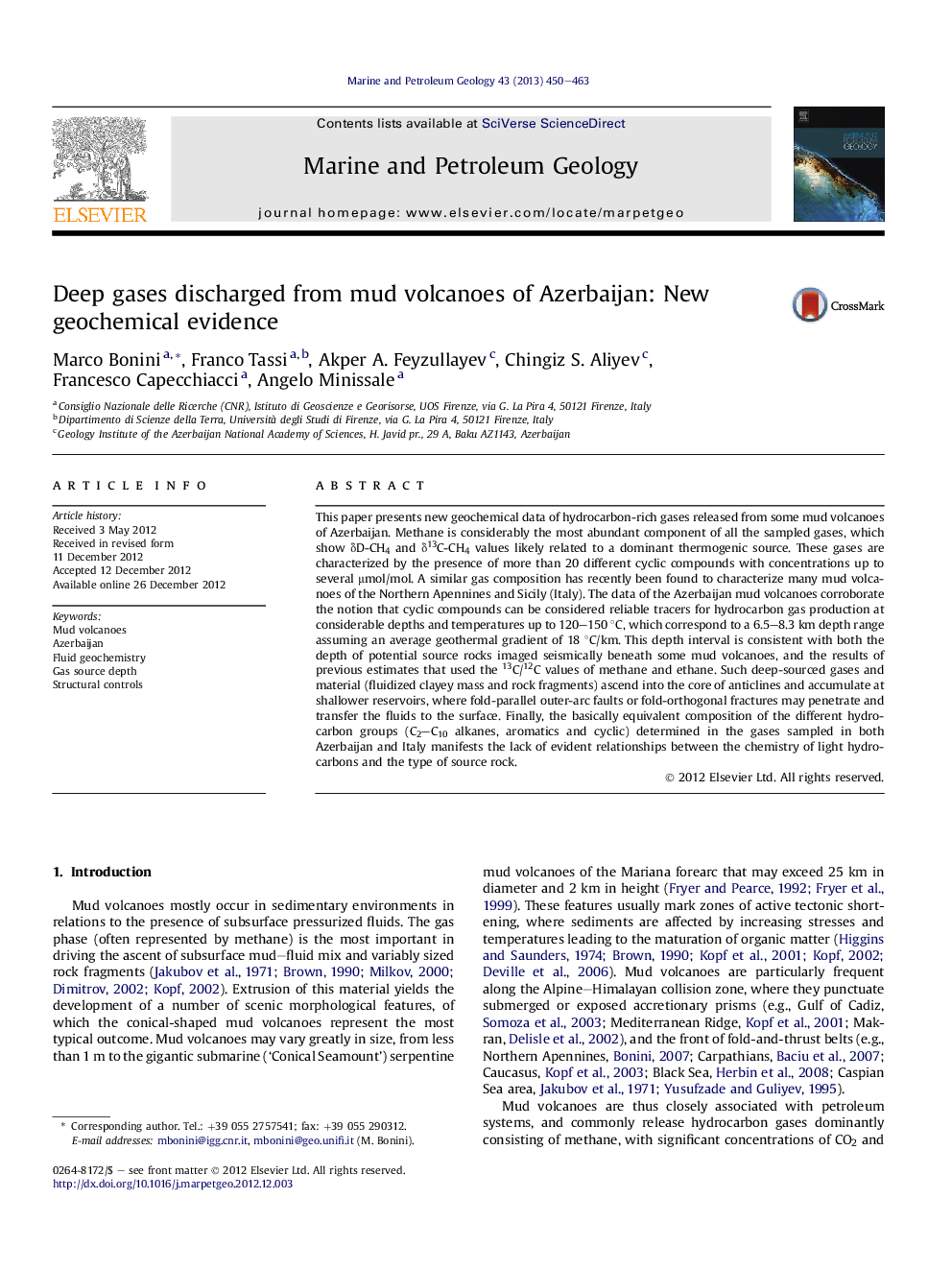| Article ID | Journal | Published Year | Pages | File Type |
|---|---|---|---|---|
| 6435564 | Marine and Petroleum Geology | 2013 | 14 Pages |
This paper presents new geochemical data of hydrocarbon-rich gases released from some mud volcanoes of Azerbaijan. Methane is considerably the most abundant component of all the sampled gases, which show δD-CH4 and δ13C-CH4 values likely related to a dominant thermogenic source. These gases are characterized by the presence of more than 20 different cyclic compounds with concentrations up to several μmol/mol. A similar gas composition has recently been found to characterize many mud volcanoes of the Northern Apennines and Sicily (Italy). The data of the Azerbaijan mud volcanoes corroborate the notion that cyclic compounds can be considered reliable tracers for hydrocarbon gas production at considerable depths and temperatures up to 120-150 °C, which correspond to a 6.5-8.3 km depth range assuming an average geothermal gradient of 18 °C/km. This depth interval is consistent with both the depth of potential source rocks imaged seismically beneath some mud volcanoes, and the results of previous estimates that used the 13C/12C values of methane and ethane. Such deep-sourced gases and material (fluidized clayey mass and rock fragments) ascend into the core of anticlines and accumulate at shallower reservoirs, where fold-parallel outer-arc faults or fold-orthogonal fractures may penetrate and transfer the fluids to the surface. Finally, the basically equivalent composition of the different hydrocarbon groups (C2-C10 alkanes, aromatics and cyclic) determined in the gases sampled in both Azerbaijan and Italy manifests the lack of evident relationships between the chemistry of light hydrocarbons and the type of source rock.
⺠We report new geochemical data of hydrocarbon gases from Azerbaijan mud volcanoes. ⺠The composition of C2-C10 hydrocarbons gases is determined. ⺠Cyclic compounds are tracers for hydrocarbon gas production at significant depths. ⺠The chemistry of hydrocarbon gases is independent upon the source rock type. ⺠The hydrocarbon gases ascend into anticlines and up to the surface via faults.
